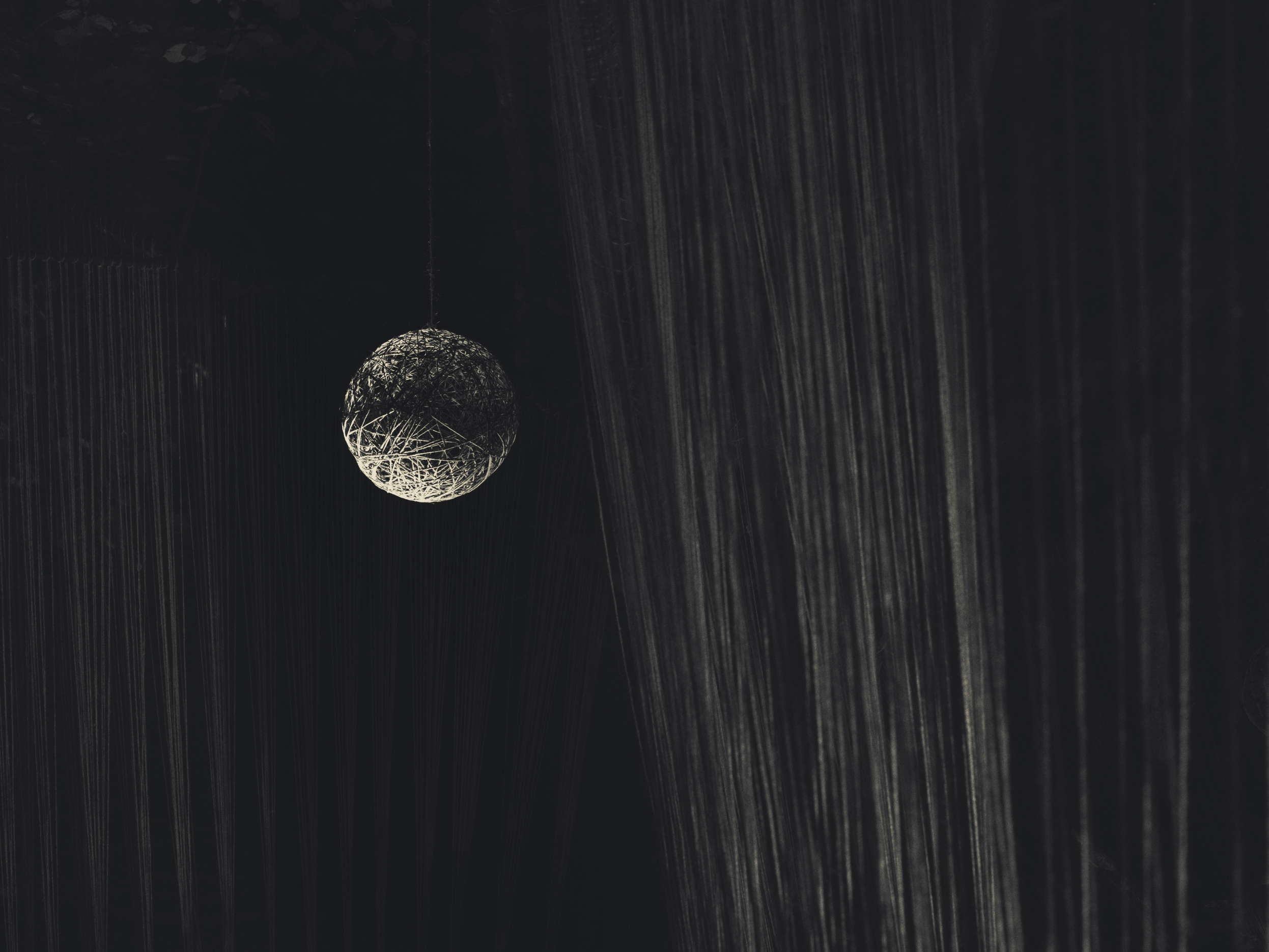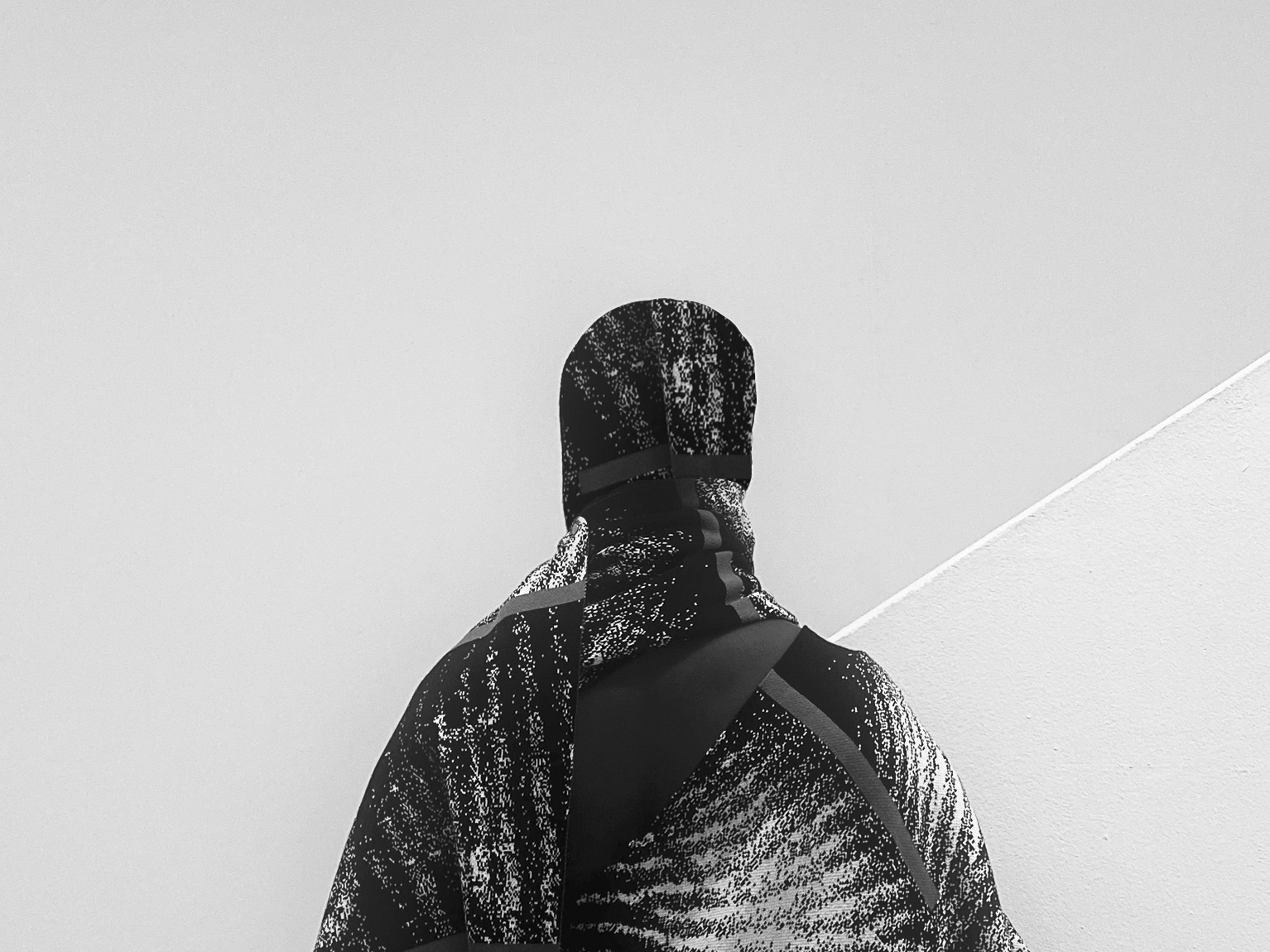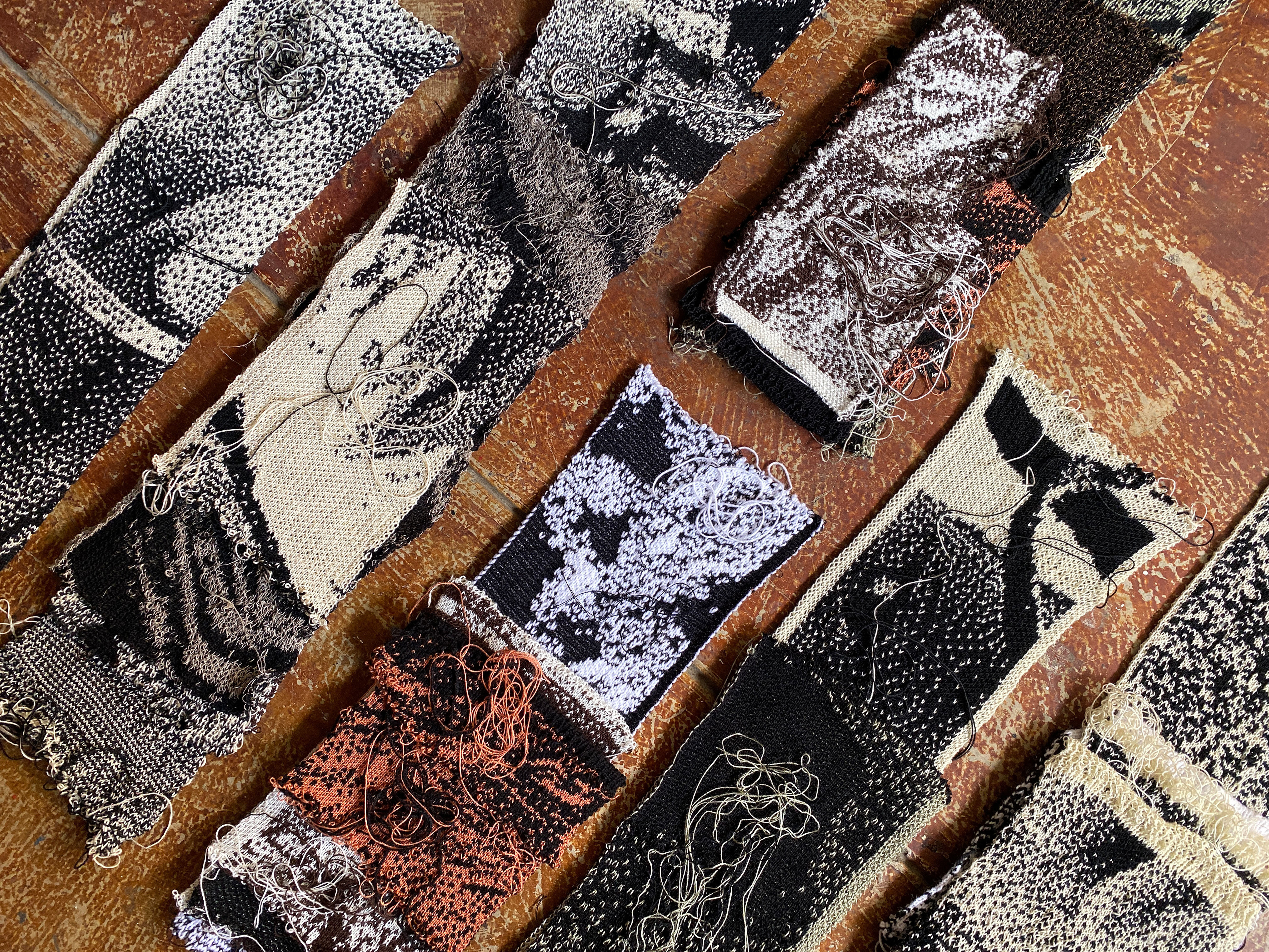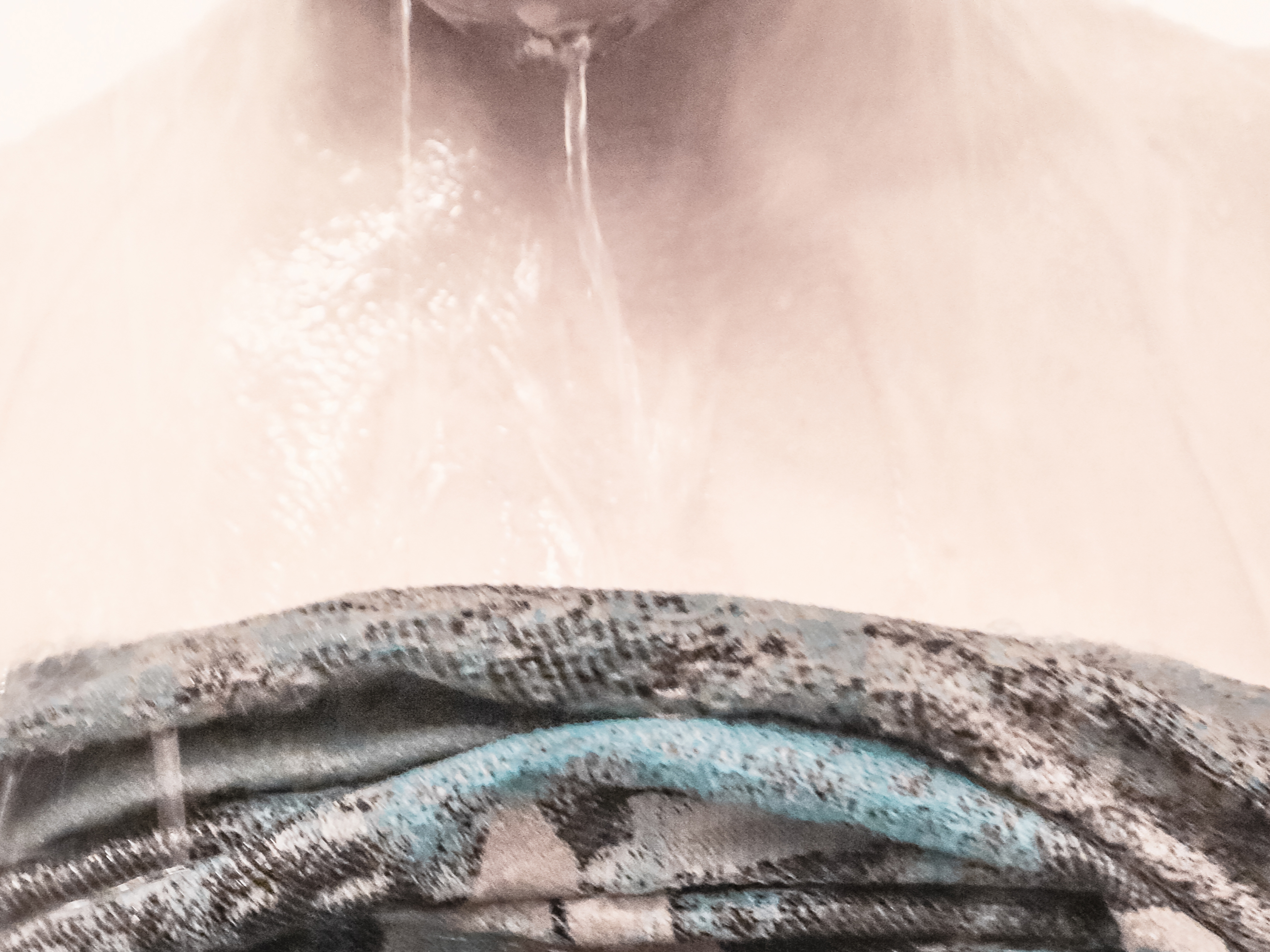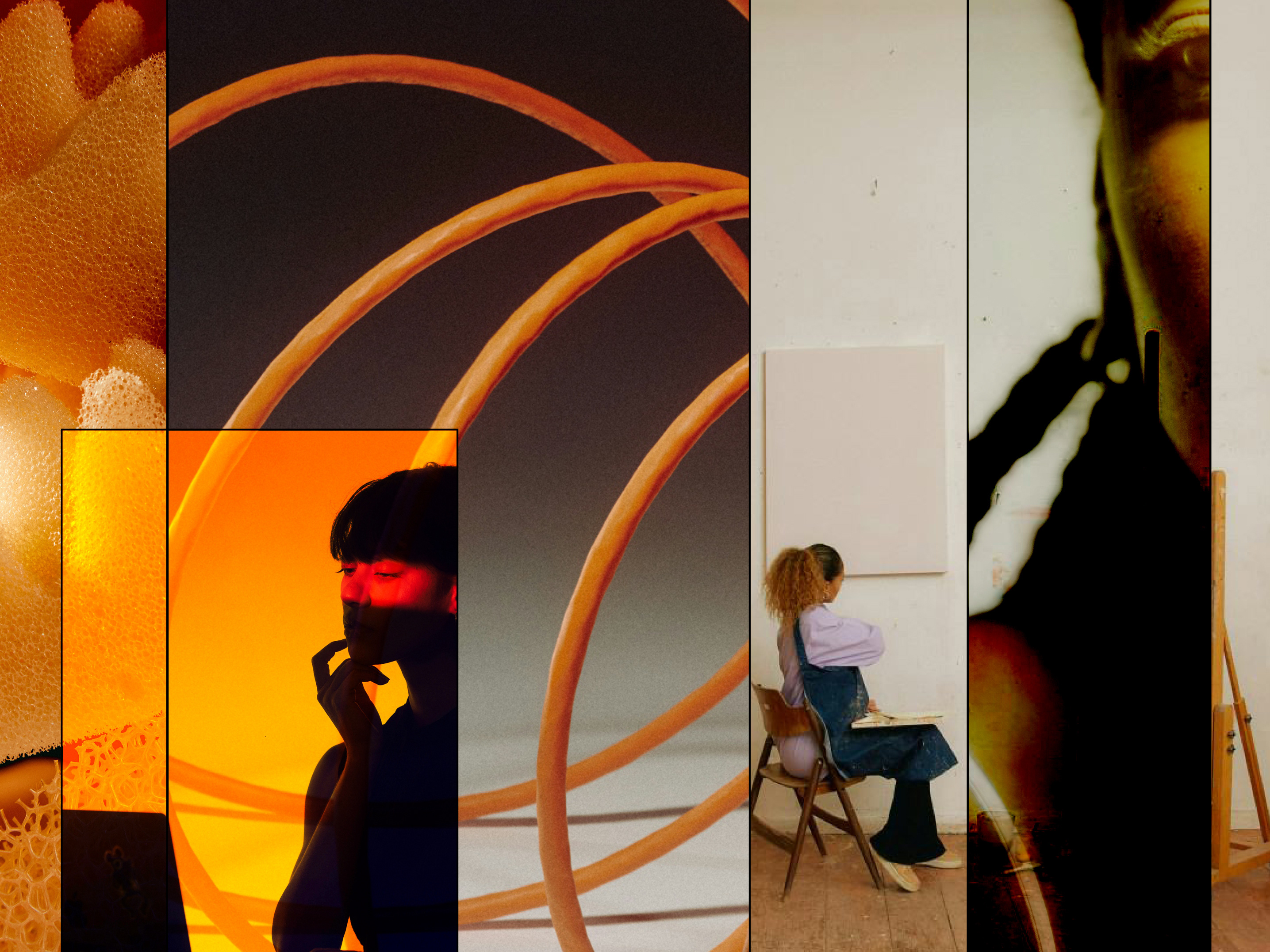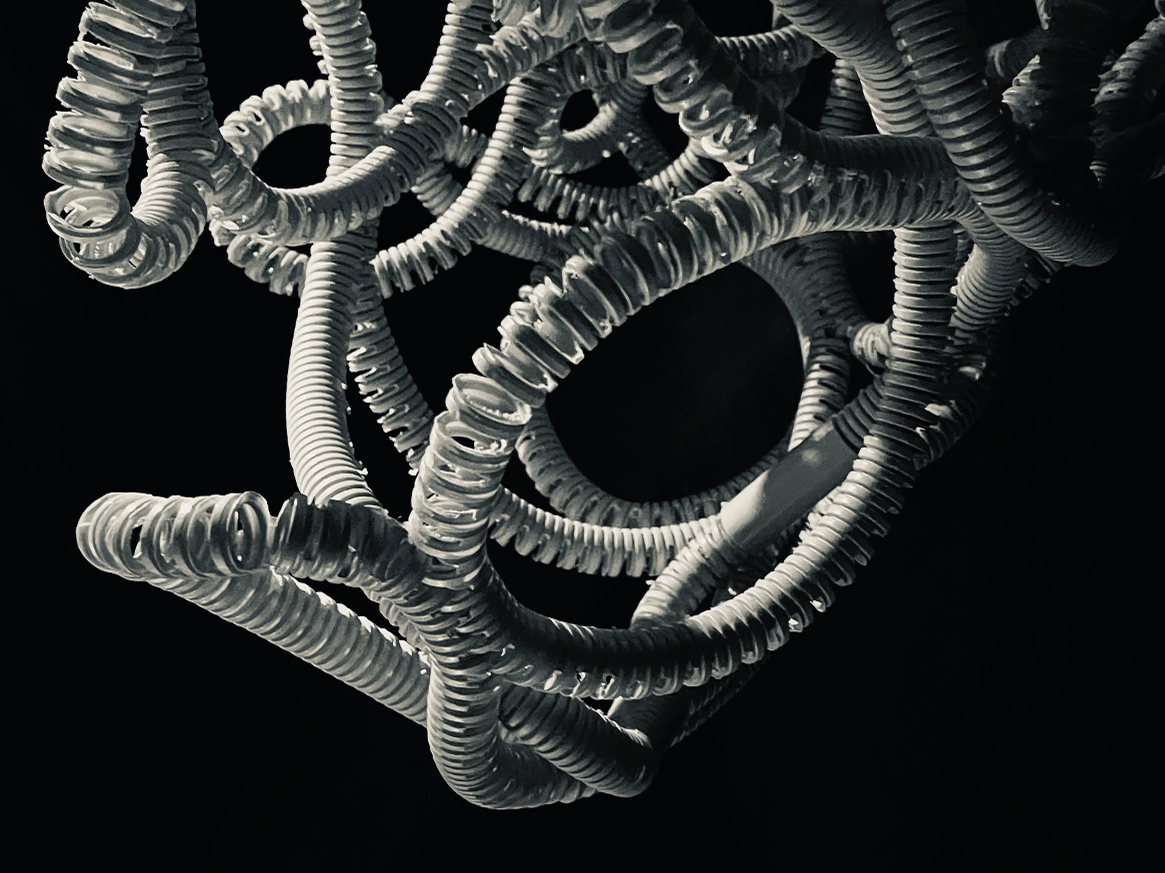The cuticle of insects consists of a flexible high-performance composite material that covers their entire exoskeleton, including the wings, as a thin layer. In the wings, it forms a membrane with a double layer, stabilising the internal framework.
This material serves multiple functions. It creates a continuous surface, protects the enclosed structures, is elastic, and almost invisible. Its functionality arises from the combination of material and structure.
This work does not primarily aim to replicate the cuticle’s functionality in textiles. Instead,it seeks to distill the essential properties of the material, presenting them in a visually and tactilely engaging, contrasting composition.
For this purpose, movable, organic crochet elements made of cotton were combined with fragile porcelain: on the one hand by dipping the fabric into the porcelain and
then firing it, whereby the fabric is destroyed and its lattice structure simultaneously fixed; on the other hand by linking the hard porcelain with the soft fabric in a surface.
The patterns created by the meshes form perforated surfaces that sometimes have a very precise and constructed character or appear more free and lively. Depending on the combination in the surface, the textile offers not only exciting tactile but also kinetic features.
The potential of this work lies in the further exploration of materiality and function. With which other materials could the elements be realised? Is there an unbreakable yet still fragile-looking alternative to porcelain? Could a fabric be created through more fluid transitions between soft and hard that fulfils a protective function without restricting?
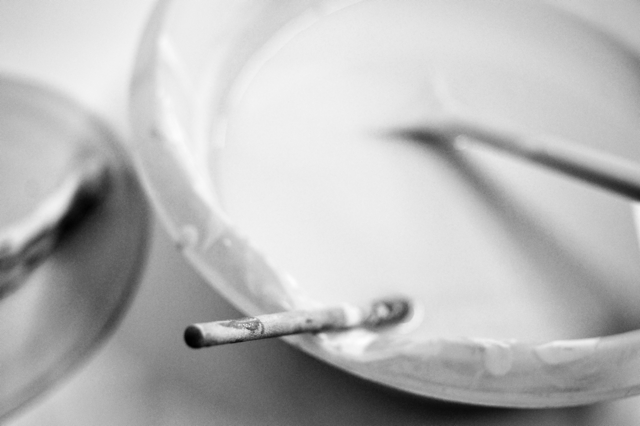
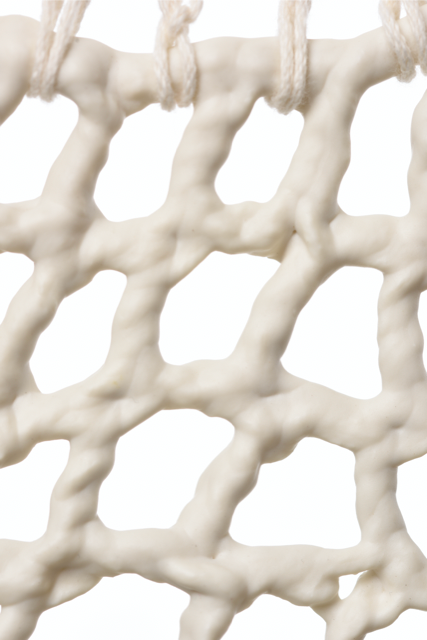
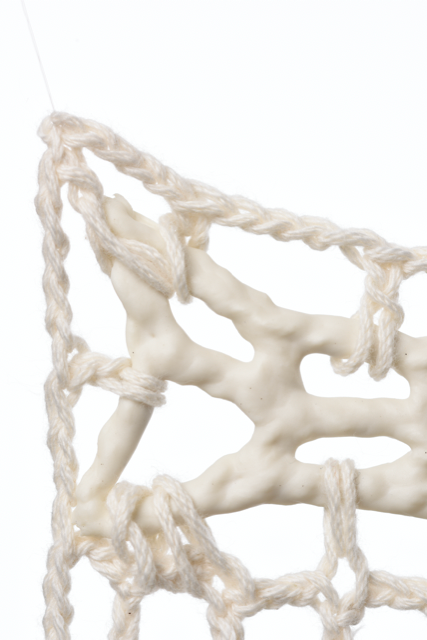
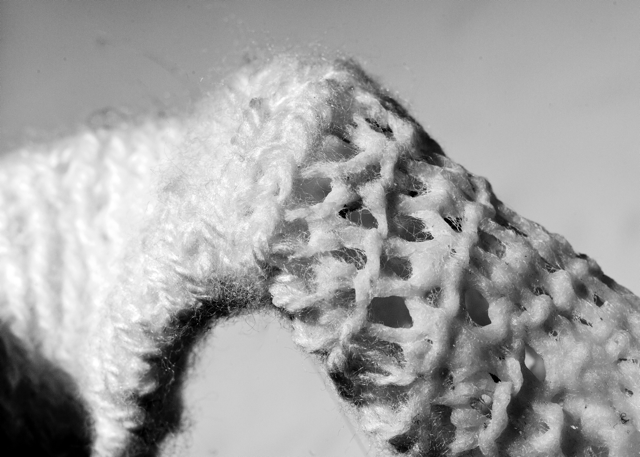


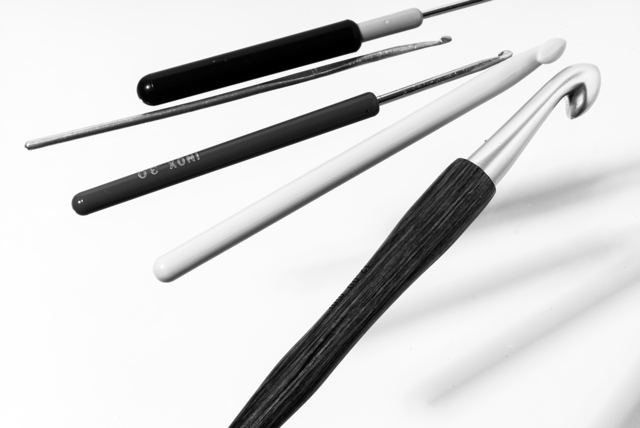

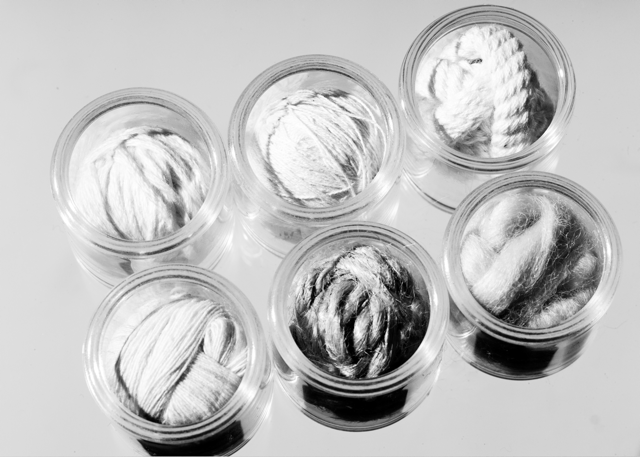

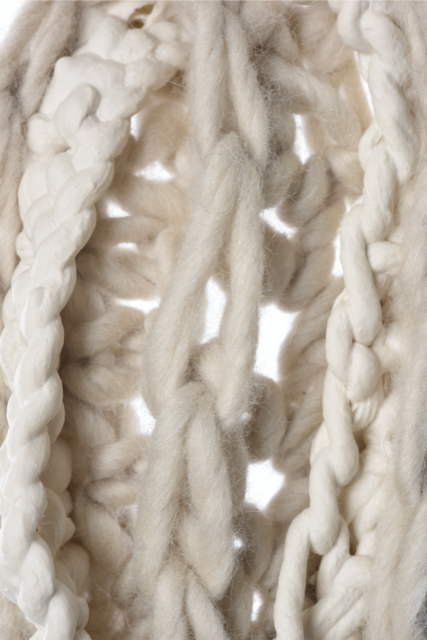
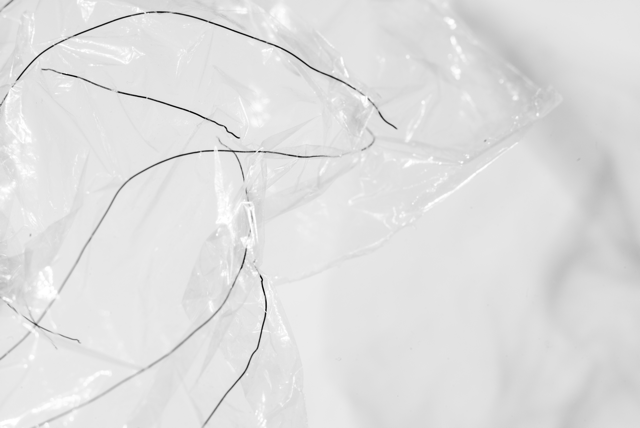

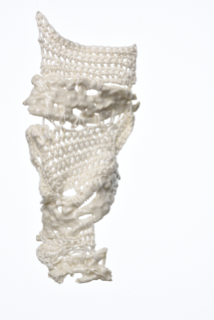


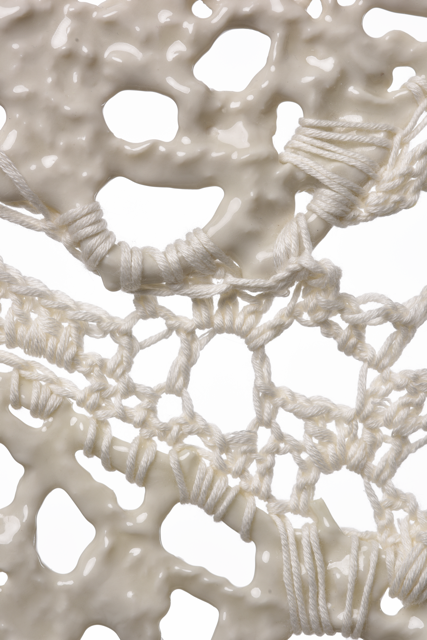
2020
